Structured Computer Organization
Andrew S. Tanenbaum
This book takes a modern structured, layered approach to understanding computer systems. It's highly accessible - and it's been thoroughly updated to reflect today's most critical new technologies and the latest developments in computer organization and architecture. Tanenbaum’s renowned writing style and painstaking research make this one of the most accessible and accurate books available, maintaining the author’s popular method of presenting a computer as a series of layers, each one built upon the ones below it, and understandable as a separate entity. A CD-ROM for assembly language programmers is available for teachers. For all computer professionals and engineers who need an overview or introduction to computer architecture.
0131485210
|
Nudge: Improving Decisions About Health, Wealth, and Happiness
Richard H. Thaler, Cass R. Sunstein
Questions for Richard Thaler and Cass Sunstein
Amazon.com: What do you mean by "nudge" and why do people sometimes need to be nudged?
Thaler and Sunstein: By a nudge we mean anything that influences our choices. A school cafeteria might try to nudge kids toward good diets by putting the healthiest foods at front. We think that it's time for institutions, including government, to become much more user-friendly by enlisting the science of choice to make life easier for people and by gentling nudging them in directions that will make their lives better.
Amazon.com: What are some of the situations where nudges can make a difference?
Thaler and Sunstein: Well, to name just a few: better investments for everyone, more savings for retirement, less obesity, more charitable giving, a cleaner planet, and an improved educational system. We could easily make people both wealthier and healthier by devising friendlier choice environments, or architectures.
Amazon.com: Can you describe a nudge that is now being used successfully?
Thaler and Sunstein: One example is the Save More Tomorrow program. Firms offer employees who are not saving very much the option of joining a program in which their saving rates are automatically increased whenever the employee gets a raise. This plan has more than tripled saving rates in some firms, and is now offered by thousands of employers.
Amazon.com: What is "choice architecture" and how does it affect the average person's daily life?
Thaler and Sunstein: Choice architecture is the context in which you make your choice. Suppose you go into a cafeteria. What do you see first, the salad bar or the burger and fries stand? Where's the chocolate cake? Where's the fruit? These features influence what you will choose to eat, so the person who decides how to display the food is the choice architect of the cafeteria. All of our choices are similarly influenced by choice architects. The architecture includes rules deciding what happens if you do nothing; what's said and what isn't said; what you see and what you don't. Doctors, employers, credit card companies, banks, and even parents are choice architects.
We show that by carefully designing the choice architecture, we can make dramatic improvements in the decisions people make, without forcing anyone to do anything. For example, we can help people save more and invest better in their retirement plans, make better choices when picking a mortgage, save on their utility bills, and improve the environment simultaneously. Good choice architecture can even improve the process of getting a divorce—or (a happier thought) getting married in the first place!
Amazon.com: You are very adamant about allowing people to have choice, even though they may make bad ones. But if we know what's best for people, why just nudge? Why not push and shove?
Thaler and Sunstein: Those who are in position to shape our decisions can overreach or make mistakes, and freedom of choice is a safeguard to that. One of our goals in writing this book is to show that it is possible to help people make better choices and retain or even expand freedom. If people have their own ideas about what to eat and drink, and how to invest their money, they should be allowed to do so.
Amazon.com: You point out that most people spend more time picking out a new TV or audio device than they do choosing their health plan or retirement investment strategy? Why do most people go into what you describe as "auto-pilot mode" even when it comes to making important long-term decisions?
Thaler and Sunstein: There are three factors at work. First, people procrastinate, especially when a decision is hard. And having too many choices can create an information overload. Research shows that in many situations people will just delay making a choice altogether if they can (say by not joining their 401(k) plan), or will just take the easy way out by selecting the default option, or the one that is being suggested by a pushy salesman.
Second, our world has gotten a lot more complicated. Thirty years ago most mortgages were of the 30-year fixed-rate variety making them easy to compare. Now mortgages come in dozens of varieties, and even finance professors can have trouble figuring out which one is best. Since the cost of figuring out which one is best is so hard, an unscrupulous mortgage broker can easily push unsophisticated borrowers into taking a bad deal.
Third, although one might think that high stakes would make people pay more attention, instead it can just make people tense. In such situations some people react by curling into a ball and thinking, well, err, I'll do something else instead, like stare at the television or think about baseball. So, much of our lives is lived on auto-pilot, just because weighing complicated decisions is not so easy, and sometimes not so fun. Nudges can help ensure that even when we're on auto-pilot, or unwilling to make a hard choice, the deck is stacked in our favor.
Amazon.com: Are we humans just poorly adapted for making sound judgments in an increasingly fast-paced and complex world? What can we do to position ourselves better?
Thaler and Sunstein: The human brain is amazing, but it evolved for specific purposes, such as avoiding predators and finding food. Those purposes do not include choosing good credit card plans, reducing harmful pollution, avoiding fatty foods, and planning for a decade or so from now. Fortunately, a few nudges can help a lot. A few small hints: Sign up for automatic payment plans so you dont pay late fees. Stop using your credit cards until you can pay them off on time every month. Make sure you're enrolled in a 401(k) plan. A final hint: Read Nudge.
Review
"How often do you read a book that is both important and amusing, both practical and deep? This gem of a book presents the best idea that has come out of behavioral economics. It is a must-read for anyone who wants to see both our minds and our society working better. It will improve your decisions and it will make the world a better place."-Daniel Kahneman, Princeton University, Nobel Laureate in Economics (Daniel Kahneman )
"In this utterly brilliant book, Thaler and Sunstein teach us how to steer people toward better health, sounder investments, and cleaner environments without depriving them of their inalienable right to make a mess of things if they want to. The inventor of behavioral economics and one of the nation''s best legal minds have produced the manifesto for a revolution in practice and policy. Nudge won''t nudge you-it will knock you off your feet."-Daniel Gilbert, professor of psychology, Harvard University, Author of Stumbling on Happiness (Daniel Gilbert )
"This is an engaging, informative, and thoroughly delightful book. Thaler and Sunstein provide important lessons for structuring social policies so that people still have complete choice over their own actions, but are gently nudged to do what is in their own best interests. Well done."-Don Norman, Northwestern University, Author of The Design of Everyday Things and The Design of Future Things (Don Norman )
"This book is terrific. It will change the way you think, not only about the world around you and some of its bigger problems, but also about yourself."-Michael Lewis, author of The Blind Side: Evolution of a Game and Liar''s Poker (Michael Lewis )
"Two University of Chicago professors sketch a new approach to public policy that takes into account the odd realities of human behavior, like the deep and unthinking tendency to conform. Even in areas-like energy consumption-where conformity is irrelevant. Thaler has documented the ways people act illogically."-Barbara Kiviat, Time (Barbara Kiviat Time )
"Richard Thaler and Cass Sunstein''s Nudge is a wonderful book: more fun than any important book has a right to be-and yet it is truly both."-Roger Lowenstein, author of When Genius Failed (Roger Lowenstein )
"A manifesto for using the recent behavioral research to help people, as well as government agencies, companies and charities, make better decisions."-David Leonhardt, The New York Times Magazine (David Leonhardt The New York Times Magazine )
"I love this book. It is one of the few books I''ve read recently that fundamentally changes the way I think about the world. Just as surprising, it is fun to read, drawing on examples as far afield as urinals, 401(k) plans, organ donations, and marriage. Academics aren''t supposed to be able to write this well."-Steven Levitt, Alvin Baum Professor of Economics, University of Chicago Graduate School of Business and co-author of Freakonomics: A Rogue Economist Explores the Hidden Side of Everything (Steven Levitt )
014311526X
Fear and Loathing in Las Vegas and Other American Stories (Modern Library)
HUNTER S. THOMPSON
Dr. Thompson made the list of inspirational scribes when I polled in a recent writing workshop, and why not? Back in a spiffy Modern Library edition, replete with additional essays, I find in this iconographic work that HST both invoked—and provoked—an era that was not so much the '60s proper, but rather the mean, shadow-filled death of that time, which is still playing out. Thank God Thompson was there to explode the myth of "objective" journalism and help pave the way for the pens and voices that followed.
0679602313
The Painter X Wow! Book
Cher Threinen-Pendarvis
The Painter X Wow! Bookcontinues to delight Painter fans with its many exciting, inspiring examples and techniques for creating fine art, photography, graphic design, multimedia, and film. In this new edition, bestselling author and renowned artist Cher Threinen-Pendarvis takes her readers step-by-step through this revolutionary program, revealing the best practices of numerous digital artists. With her clear, instructive approach, Cher quickly gets beginners up to speed and provides more advanced users with additional insight on the latest creative and productive techniques. New to this edition is coverage of Painter’s latest tools, including the new RealBristle Painting System, Universal Mixer palette, Match Palette effect, Workspace Manager, an enhanced Photo-Painting System, and new composition tools. This invaluable resource gives you:
• Numerous full-color images and illustrative techniques throughout, created by renowned Painter artists worldwide
• Insider knowledge of Painter’s tools, brushes, functions, and preferences from the creator of hundreds of default brushes in Corel Painter
• Step-by-step instructions for creating artwork in a wide range of industries including commercial illustration and design, photography, fine arts, multimedia, Web design, and entertainment
• Coverage of the new RealBristle Painting System, a revolutionary system for replicating the sensation of the interaction between the artist’s brush, the paint, and the canvas
• A CD-ROM containing a trial version of Corel Painter X, stock photos, video clips, a study guide for instructors, and over 100 unique custom brushes, plus new papers, patterns, and lighting effects built by Cher herself
0321503252
The Painter X Wow! Book
Cher Threinen-Pendarvis
The Painter X Wow! Bookcontinues to delight Painter fans with its many exciting, inspiring examples and techniques for creating fine art, photography, graphic design, multimedia, and film. In this new edition, bestselling author and renowned artist Cher Threinen-Pendarvis takes her readers step-by-step through this revolutionary program, revealing the best practices of numerous digital artists. With her clear, instructive approach, Cher quickly gets beginners up to speed and provides more advanced users with additional insight on the latest creative and productive techniques. New to this edition is coverage of Painter’s latest tools, including the new RealBristle Painting System, Universal Mixer palette, Match Palette effect, Workspace Manager, an enhanced Photo-Painting System, and new composition tools. This invaluable resource gives you:
• Numerous full-color images and illustrative techniques throughout, created by renowned Painter artists worldwide
• Insider knowledge of Painter’s tools, brushes, functions, and preferences from the creator of hundreds of default brushes in Corel Painter
• Step-by-step instructions for creating artwork in a wide range of industries including commercial illustration and design, photography, fine arts, multimedia, Web design, and entertainment
• Coverage of the new RealBristle Painting System, a revolutionary system for replicating the sensation of the interaction between the artist’s brush, the paint, and the canvas
• A CD-ROM containing a trial version of Corel Painter X, stock photos, video clips, a study guide for instructors, and over 100 unique custom brushes, plus new papers, patterns, and lighting effects built by Cher herself
0321503252
|
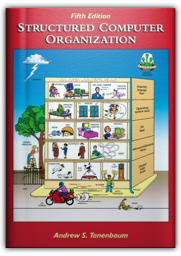
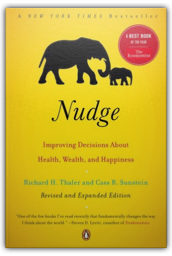
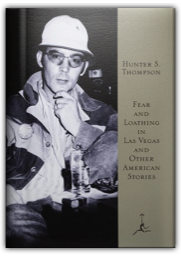
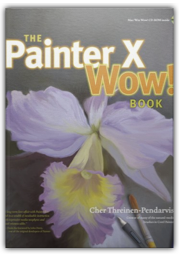
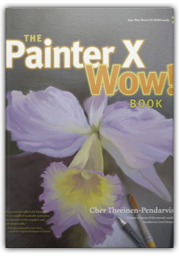



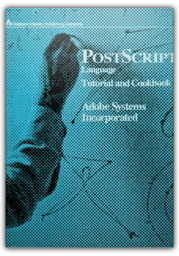
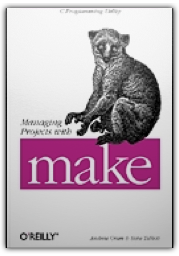

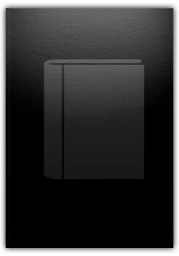
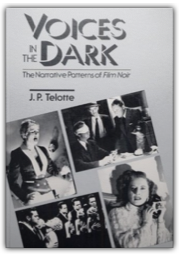
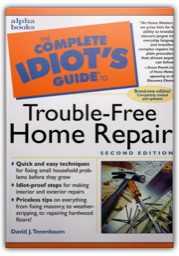
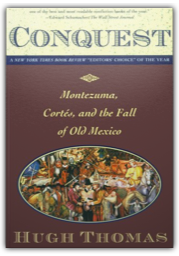
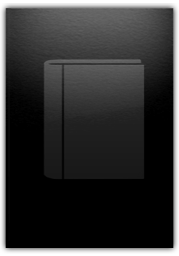
 Made with Delicious Library
Made with Delicious Library